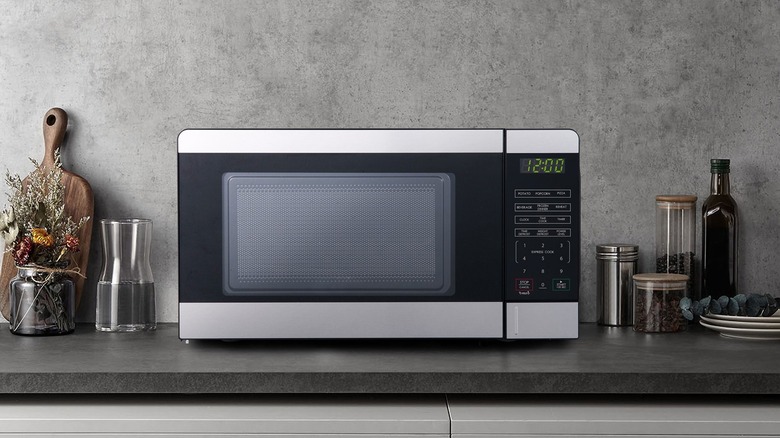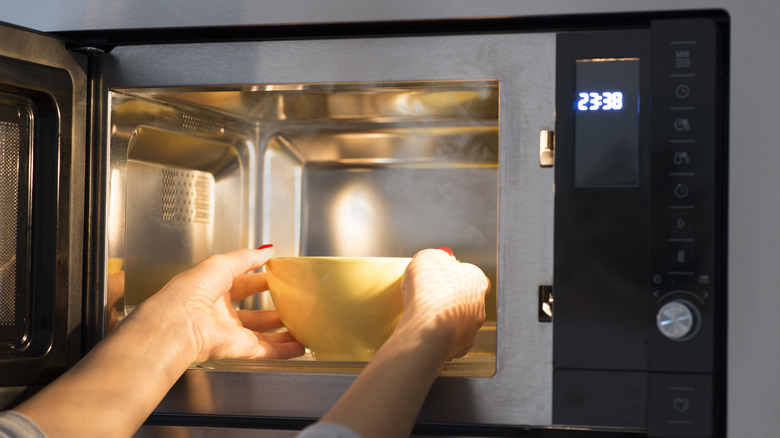The Key To Simmering Food In The Microwave
The microwave is one of the wonders of the modern kitchen. Put your food in, press some buttons, and within minutes or even seconds, you are chowing down. Whether you are making popcorn for that movie fest with the kiddos, heating a frozen dinner to nosh on while you study, or melting butter for your baking needs, the microwave is all about speed and almost immediate gratification. But when you see TikTok videos like that of Emily Mariko using ice to reheat her rice in this small appliance or Self suggesting you can dry your herbs, steam fish, and even a method to make juicing a lemon easier by way of the microwave, you may come to the realization that you may not be entirely familiar with how to use your appliance efficiently.
The microwave can really be a friend in the kitchen if you know how to use it. Trusted Reviews points out that most of us don't take the time to learn about the different power settings and their benefits. This is especially true when it comes to simmering foods in the microwave. Yes, you can simmer foods in the microwave, but there is key knowledge about your small appliance that is needed to get it right.
Low and slow, even in the microwave
According to Trusted Reviews, the key to getting simmering right is low and slow. The Spruce Eats explains simmering is a technique used to cook ingredients in liquid where the temperature of the food cooking can range from 180 degrees F to 205 degrees F. It's best used when making soups, vegetables, and making tough pieces of meat tender. But when you are doing this in the microwave, it is all about the power setting and patience.
Trusted Reviews states that if you keep your setting between 100-400 watts (w), you can simmer rice, pasta, and even dumplings. But the sweet spot for simmering many foods is the 400w to 500w range. The site shares that if your recipe is one that cannot be stirred or contains a dairy product, this setting will help you achieve your desired results. Additionally, using this power setting when simmering meats allows for a longer cook and one in which your meat doesn't become a dehydrated piece of jerky. As Food & Wine points out, the better you know your microwave, the better cook you can become.

